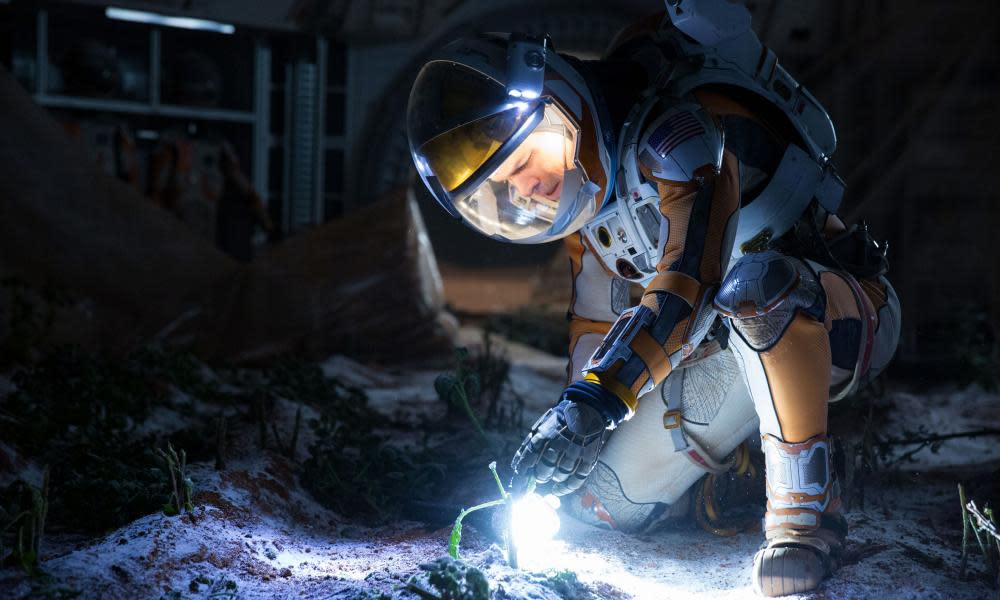Space savers: astronaut urine could make supplies from nutrients to tools

Astronauts could find themselves eating nutrients and using plastics produced by yeast fed with their own urine, according to researchers exploring ways to harness human waste in space.
Urine is already recycled on board the International Space Station to provide clean drinking water for US astronauts – although the system hasn’t been embraced by the Russian side of the station.
But now a US-based team has taken the motto “waste not, want not” to new heights, using human waste from breath to pee to produce a variety of materials for lengthy space journeys.
“Astronauts will need to be able to produce nutrients and materials they need during Earth-independent long-term space travel,” said Mark Blenner, a synthetic biologist from Clemson University in South Carolina, who is leading the research. “They simply don’t have the space to transport all possible needs – and certain nutrients, drugs, and materials can degrade over the course of three-plus year mission.”
Presented at the annual conference of the American Chemical Society, the project is focused on using human urine to feed various strains of Yarrowia lipolytica – a yeast commonly found in cheese.
Urea within urine provides the yeast with nitrogen, while algae provide the yeast with a source of sugars, lipids and other nutrients. These algae are also part of the bid to recycle human waste, with the photosynthetic organisms producing their carbon-based substances using CO2 which could come from sources that include the breath of the astronauts.
Crucially, previous research by various groups has shown the yeast can be genetically modified to produce all manner of substances, including omega-3 fatty acids – nutrients essential for health that the human body can’t make – and even plastics, such as polyesters.
With the ISS already boasting a 3D printer, the idea is that one day it might be possible to use the yeast to produce plastics that could be used to print all manner of items, from small components to tools.
“Capabilities in synthetic biology enable us to create different strains of yeast that can make a variety of different products,” said Blenner, adding that the yeast itself takes up very little space and is low-mass.
While astronauts have previously grown lettuce on board the ISS, Blenner points out yeasts might have advantages. “They can make many of the vitamins and nutrients we often get from plant-based food, but grow at a much faster rate with less volume required,” he said.
Having won funding from Nasa in 2015, the project is in its early stages, but Blenner said the team have been making progress.
“As far as products, we have demonstrated the proof of principle and can produce polyester plastics, but this work is still preliminary. We are not making large enough quantities for practical application yet,” said Blenner, noting that at present a 1,000 litre tank would be needed to make a simple plastic spanner.
And there are other challenges to tackle, from how best to extract the plastic from the yeast to whether the organisms could cope in a Martian environment. “There is still a lot we don’t know about how yeast grow in microgravity, in a lower pressure atmosphere, or with higher background radiation levels,” said Blenner.
But the team are, with Blenner adding that other researchers are looking at the possibility of using human faeces to produce organic material to aid the yeast’s growth and production.
David Cullen, professor of astrobiology and space biotechnology at Cranfield University who is not involved in the project, said it is one of a number of approaches to increase the level of recycling on space missions, with other projects including those looking deeper at using algae to remove CO2 and replenish oxygen levels inside spacecraft through photosynthesis.
But he welcomed the new research. “The only times we [currently] have astronauts living for long periods of time away from the Earth is on the International Space Station and of course that is relatively easy because you can frequently resupply that with consumables,” said Cullen, adding that in the future astronauts could be sent further afield, be that to the moon, Mars or beyond, where resupply would be difficult.
But Mark Hempsell, president of the British Interplanetary Society, was non-plussed, pointing out that the yeast technology was likely to take many years of development before such system would be small enough and light-weight enough to prove useful on a space mission.
“I can’t help feeling in most cases it is a lot lighter just to carry the spares than a giant piece of machinery that produces a rather crappy piece of plastic that might not be the best for the tool in the first place,” he said.

 Yahoo News
Yahoo News 
